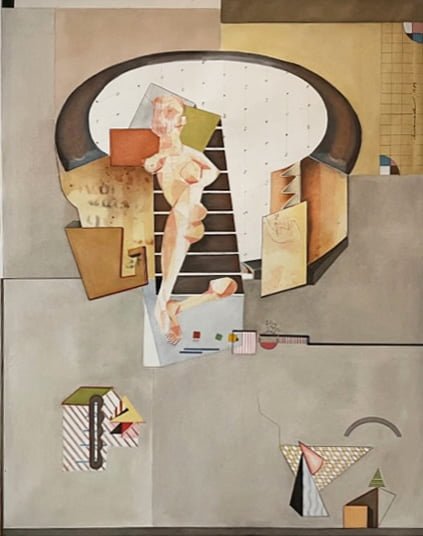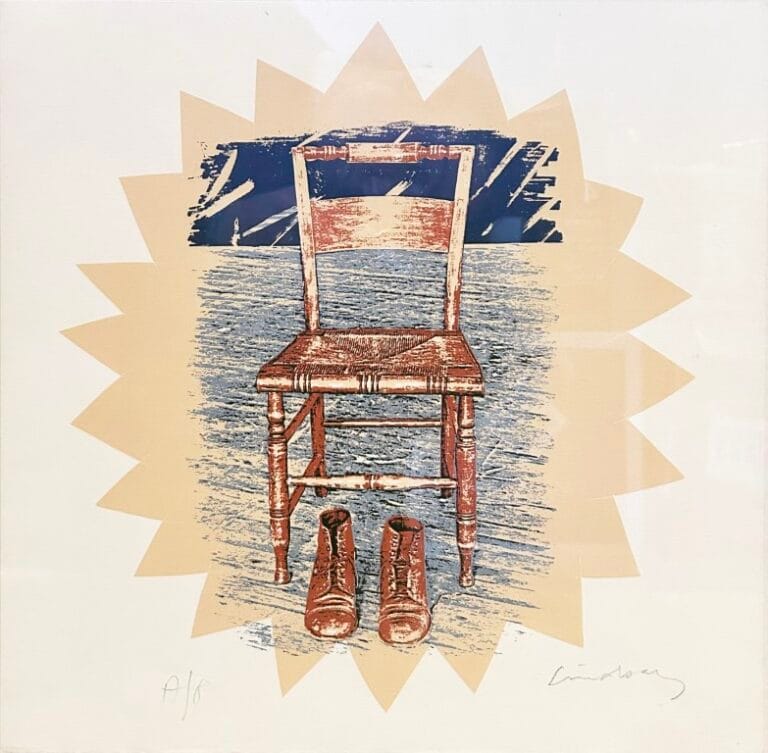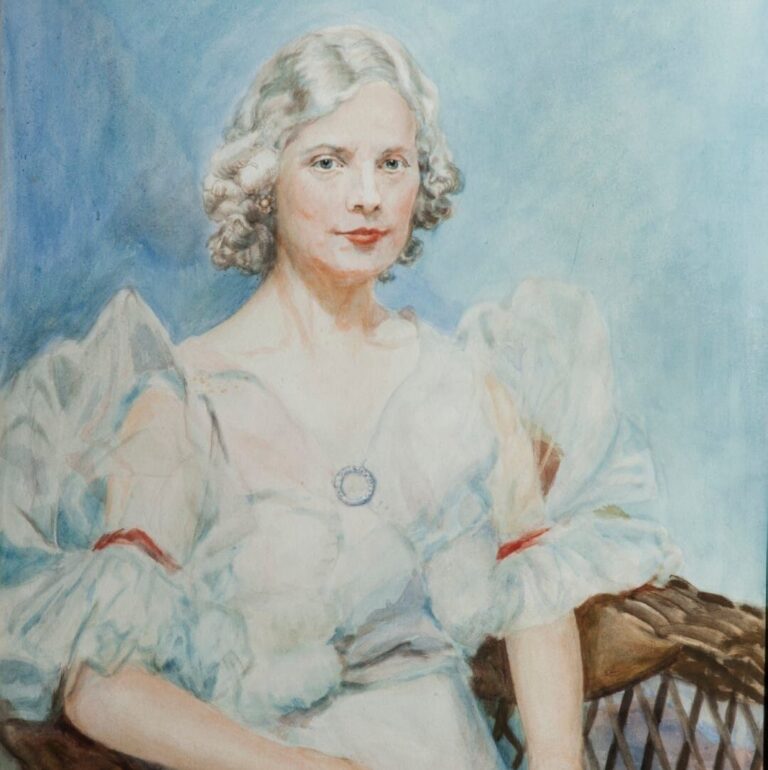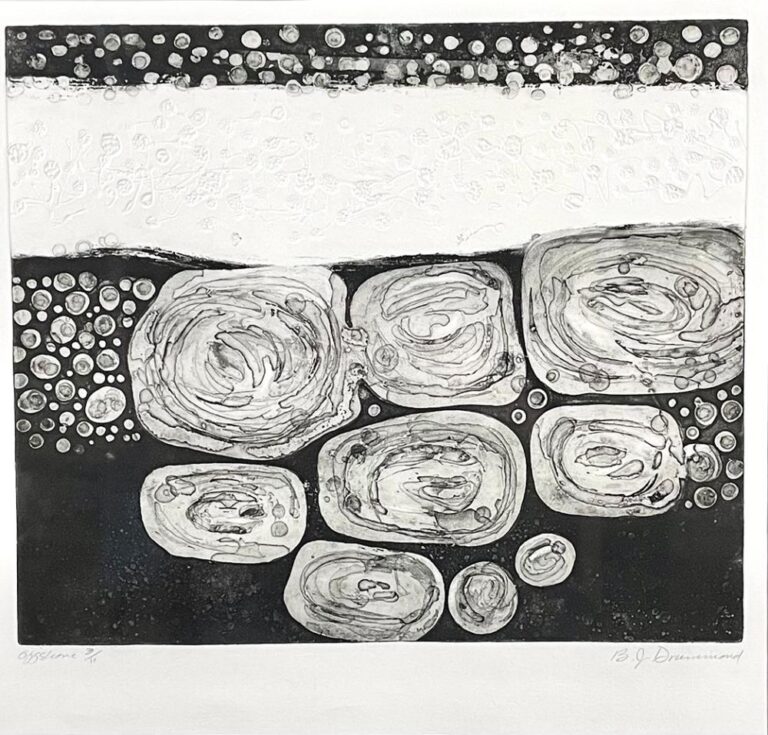1918-2005 → Marianna Schmidt’s work is rooted in a lived experience of war, destruction and violent displacement. Themes of dislocation, alienation and loneliness, sometimes juxtaposed against a wry humour are prevalent and reflect her own experiences as a displaced person during and after World War II.
Her career spanned forty years, plenty of time for Schmidt to experiment with a variety of mediums, including etching, lithography, photography, painting, sculpture and collage. During the 1960s and 1970s, she embraced the Pop Art and Hard-Edge Abstraction movements in a series of silkscreen prints. The 1980s saw her abandon printmaking for expressionist figurative work, for which she had a lasting affinity. She admired the work of several German Neo-Expressionist artists and during this time created a number of mixed media works on paper exploring figuration and the human condition. In the 1990s, her figures became more stylized and streamlined but still maintained that characteristic sense of alienation. Schmidt drew from local and distant artists and movements, but also from her own experience, infusing her work with a particular poignancy. She worked outside the limelight, with strong feeling for the precariousness of existence and with a particular eye for looks and gestures that create separation between people. As she aged, she immersed herself in collage. Her last important body of work, created in the late 1990s – early 2000s was a series of Xerographic prints based on her original collages.
Schmidt was born in Hungary in 1918. Her early life was disrupted by war and the loss of her entire family. Before arriving in Canada in 1953, she spent many years as a displaced person in Europe. In 1960 and at the age of 42, she began art studies at the Vancouver School of Art (now Emily Carr University of Art + Design) and was taught by Orville Fisher and Jack Shadbolt who were both highly influential in her development as an artist. She exhibited widely and her printmaking was recognized internationally. In 1997 she was among 96 artists invited to participate in the 10th International Biennial Exhibition of Prints in Tokyo.
Schmidt’s work is held in numerous Canadian public collections including the Vancouver Art Gallery, the Burnaby Art Gallery, the Art Gallery of Greater Victoria, the Winnipeg Art Gallery, the Art Gallery of Alberta, the National Gallery of Canada, the Canada Council Art Bank, the National Gallery of Australia, the Museum of Contemporary Art in Lima, Peru, the Muse of Fine Arts, Caracas, Venezuela, the Museum of Modern Art in New York, the Seattle Art Museum, and the Stedelijk Museum voor Actuele Kunst in Ghent, Belgium. She died in Vancouver in 2005.
For all you deep art divers out there.
International Biennial Exhibition of Prints – Tokyo, Japan
Jack Shadbolt – Artwork and Biography from our own collection
Marianna Schmidt: Untitled (Three Figures) by Robin Laurence, An Open Book: A Catalogue of Artworks from the Surrey Art Gallery’s Permanent Collection
The Canadian Art Preservation Foundation posts short biographies and information on artists and artwork from its collection in a not-so-subtle attempt to capture your attention and interest in our mission, but we also just want to keep this artwork in view. We are excited about the art we collect and want to share it with you. CAPF is a non-profit organization dedicated to preserving the artwork of Canada’s superstar artists for future generations to examine, study and exhibit – the ones you know and the ones you might not know so well. We accept artwork, journals, notes, letters, exhibition catalogues and anything else that might comprise a visual and/or intellectual “portrait” (ahem, please pardon the pun) of a particular artist.
View more artwork from our CAPF Collection and if you’d like, Donate Here.
We archive, preserve and promote Canadian art.







